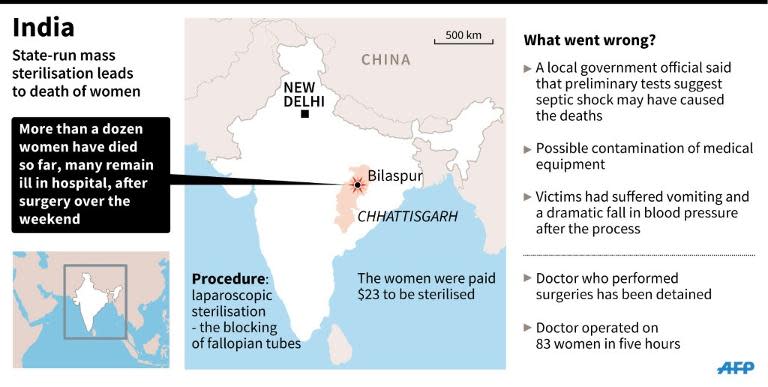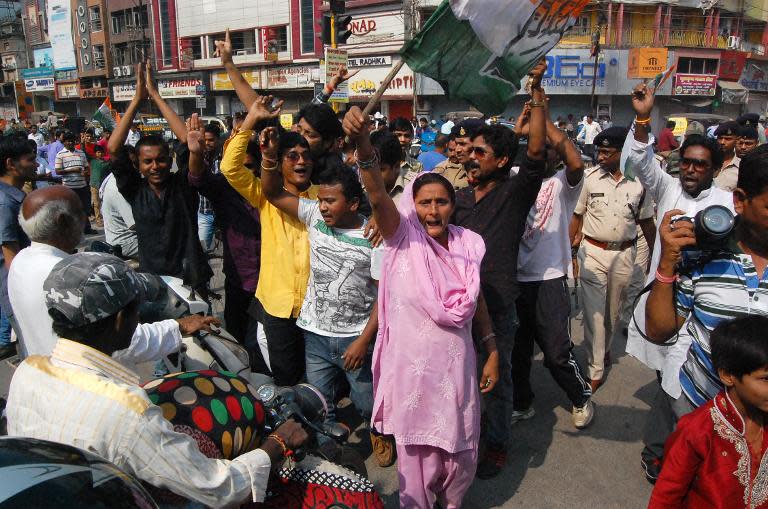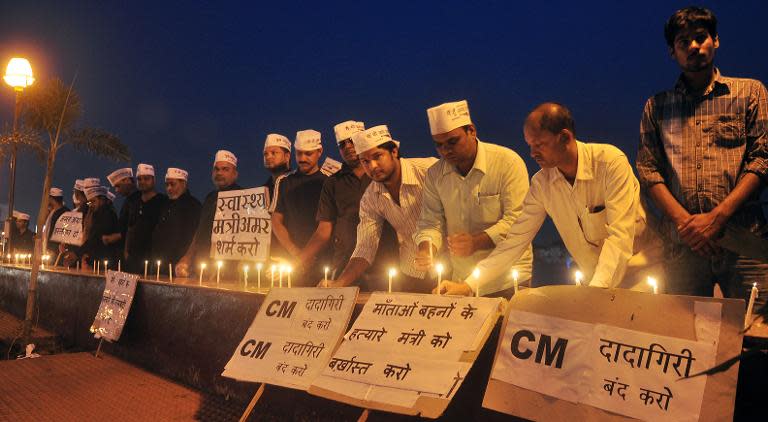Deaths expose horrors of India's mass sterilisations
As she waited to go under the knife in a Delhi hospital, Jamantara Tokas admitted she was terrified after the death of 13 women in botched sterilisations, but said the money on offer was too good to turn down. The scandal in central Chhattisgargh state is just the tip of the iceberg in a country where hundreds die every year from having the surgery in "horrible" conditions, often against their will. The deaths have shone a light on the extreme measures being used to try to control India's billion-plus population -- sometimes with tragic consequences. But Tokas, a mother of four, said she had been persuaded by the 1,400 rupees ($23) she would receive -- and that her husband had encouraged her to go ahead. "I heard about the sterilisation deaths and I was really scared. But my husband said it was alright, plus the money was so good," Tokas, 26, told AFP. Doctors and women's rights activists told AFP they were not surprised by the deaths in Chhattisgarh, where a single surgeon operated on 83 women in just five hours at a state-run camp held in an abandoned hospital. Around five million women are sterilised in India every year, most of them in mass camps in rural areas, each receiving the government payment of 1,400 rupees. The majority of the surgeries are performed between November and April -- dubbed the "sterilisation season" -- to fill quotas before the end of the financial year. "What happened in Chhattisgarh is shocking but not entirely surprising," Sudheer Nair, a doctor at the non-profit Family Planning Association of India, told AFP. "Women are operated upon in a hurry in most horrible conditions and then sent back to their homes with just some painkillers. There is zero follow-up care." Many say they are forced into the procedure by relatives eager to get their hands on the cash, or by government health workers seeking to meet informal targets. - 'Women are bearing the brunt' - According to campaigners, instruments are often reused without being properly sterilised and surgeries performed in makeshift rural clinics. The government recorded 336 deaths from female sterilisations between 2010 and 2013. India introduced forced sterilisations for men in the 1970s to limit its population growth, but was forced to abandon them due to widespread anger. The government stopped setting official targets for sterilisations in 1996, but rights activists say the practice persists at a local level, with health workers and doctors receiving cash bonuses for each procedure. A 2012 Human Rights Watch report said women were routinely denied information about alternative methods of contraception as local health workers sought to meet informal targets for sterilisations. The rights group also criticised India for focusing predominantly on women, with men accounting for only a tiny proportion of sterilisations, even though the procedure is simpler. The latest tragedy has underscored the marginalised position of women in India after a series of high-profile assaults, including the fatal gang-rape of a student on a bus in Delhi in 2012. "Poor, marginalised and illiterate women are bearing the brunt despite the fact that they may not have necessarily opted for sterilisation," said Sona Sharma, joint director at the Delhi-based Population Foundation of India. "So many morbidities and other complications happen only because of lack of simple infection prevention practices."






